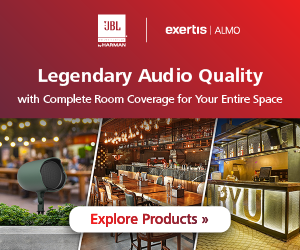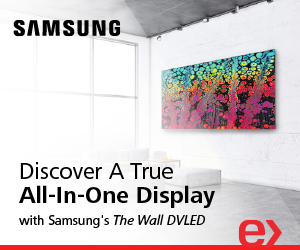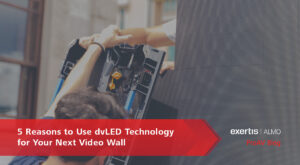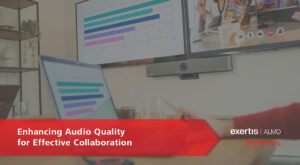Enhancing Audio Quality for Effective Collaboration
Conference Room Acoustics
In the dynamic world of professional audio-video solutions, the importance of clear and immersive audio experiences in conference rooms cannot be overstated. Effective collaboration hinges not only on high-definition visuals but also on crystal-clear sound quality. As resellers and integrators, understanding and implementing cutting-edge solutions for optimizing conference room acoustics can significantly elevate the overall meeting experience for our clients.
Acoustics play a crucial role in how well audio is transmitted and received within a conference room environment. Factors such as room size, shape, and materials used in construction can affect sound quality. Poor acoustics, characterized by echoes, reverberations, and background noise, can hinder communication and reduce meeting productivity.
Recent advancements in acoustic treatment and technology have revolutionized how we address these challenges. Acoustic panels and diffusers are designed to absorb and diffuse sound energy which helps to enhance speech intelligibility and clarity. Integrating these solutions into conference room design can create an environment where every word is heard with precision, fostering ideal communication among meeting participants.
Video Cameras Track Speakers
Positional tracking is a sophisticated technique essential for determining the precise position and orientation of objects, including cameras and users, within three-dimensional space. It operates through a series of steps:
First, sensors like accelerometers, gyroscopes, and depth cameras gather data on movement, detailing acceleration, rotation, and depth. Next, this sensor data is fused to estimate the object’s exact position and orientation using algorithms that interpret changes over time. The system then identifies feature points in the environment, such as visual markers or distinctive elements, which are matched with a reference map to refine tracking accuracy. Continuously updated estimates of position and orientation are recalibrated via a feedback loop, correcting any deviations to maintain accuracy.
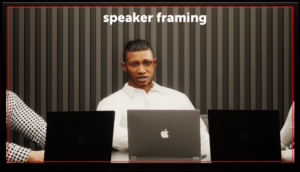 In video conferencing systems, positional tracking technology is pivotal for enhancing auto-tracking and speaker framing capabilities. Auto-tracking enables cameras to autonomously follow speakers as they move within a room, utilizing visual cues like face detection and body movement to adjust camera orientation. This feature ensures that speakers remain within view. Speaker framing, on the other hand, focuses on centrally positioning the active speaker in the camera’s frame, particularly beneficial in multi-participant settings. By analyzing audio cues, such as voice activity detection and microphone array data, conferencing systems triangulate the speaker’s location using techniques like time delay of arrival (TDOA) and adaptive beamforming. This dual approach, combining audio source localization with visual tracking, ensures comprehensive coverage and accurate framing during video conferences.
In video conferencing systems, positional tracking technology is pivotal for enhancing auto-tracking and speaker framing capabilities. Auto-tracking enables cameras to autonomously follow speakers as they move within a room, utilizing visual cues like face detection and body movement to adjust camera orientation. This feature ensures that speakers remain within view. Speaker framing, on the other hand, focuses on centrally positioning the active speaker in the camera’s frame, particularly beneficial in multi-participant settings. By analyzing audio cues, such as voice activity detection and microphone array data, conferencing systems triangulate the speaker’s location using techniques like time delay of arrival (TDOA) and adaptive beamforming. This dual approach, combining audio source localization with visual tracking, ensures comprehensive coverage and accurate framing during video conferences.
The integration of video conferencing platforms with advanced audio solutions is vital to delivering a desirable collaboration experience. Compatibility with leading platforms allows for easy integration and enhances user accessibility. Features such as automatic speaker tracking, echo cancellation, and spatial audio technology further improve the immersive experience, making remote participants feel as if they are in the same room.
Effective Collaboration Solutions
As we strive to create optimal meeting environments, solutions like Barco’s ClickShare play a crucial role in simplifying content sharing and enhancing collaboration. ClickShare seamlessly integrates with existing AV setups, allowing users to wirelessly share content from any device with just the click of a button. Its intuitive interface and robust security features make it a preferred choice for facilitating productive meetings across different platforms.
 Barco has introduced ClickShare Bar Pro, an all-in-one solution that sets new standards in meeting room technology. This innovative device combines seamless content sharing with advanced audio and video capabilities. Featuring group framing, speaker framing, and tracking functionalities, ensuring participants are always in focus and perfectly framed during meetings. Moreover, it is equipped with six beamforming MEMS microphones, offering superior echo and background noise cancellation. This ensures crystal-clear audio quality, enabling natural and effortless communication even in challenging acoustic environments.
Barco has introduced ClickShare Bar Pro, an all-in-one solution that sets new standards in meeting room technology. This innovative device combines seamless content sharing with advanced audio and video capabilities. Featuring group framing, speaker framing, and tracking functionalities, ensuring participants are always in focus and perfectly framed during meetings. Moreover, it is equipped with six beamforming MEMS microphones, offering superior echo and background noise cancellation. This ensures crystal-clear audio quality, enabling natural and effortless communication even in challenging acoustic environments.
By integrating these cutting-edge features into a single device, Barco enhances the efficiency and effectiveness of collaboration in modern meeting spaces. The ClickShare Bar Pro delivers an unparalleled meeting experience boosting engagement and productivity.
Future of Conference Room Design
In conclusion, the future of conference room design lies in embracing innovative solutions that prioritize audio quality alongside visual clarity. By staying abreast of evolving trends in acoustic treatment and adaptive audio technology, resellers and integrators can offer tailored solutions that meet the unique needs of their clients. Whether optimizing small huddle rooms or expansive boardrooms, investing in advanced audio solutions ensures that every meeting is productive, collaborative, and engaging.
At Exertis Almo, we are committed to supporting you in delivering superior AV solutions that exceed client expectations. Contact us today to explore how our comprehensive range of products and expertise can help you transform conference room environments into centers of seamless collaboration and communication.
Want more like this blog? Check out “Elevating Collaboration Spaces: Improving Design and Funcitionality“.


 I’ve even seen an increase in requests for wireless for city council chambers. Read that again. For a city council. They sit behind a council table. Your typical local council is probably well known for being intractable and immovable so I can’t fathom the need for a wireless in that application. Hardwired mics only.
I’ve even seen an increase in requests for wireless for city council chambers. Read that again. For a city council. They sit behind a council table. Your typical local council is probably well known for being intractable and immovable so I can’t fathom the need for a wireless in that application. Hardwired mics only. There is only one absolute rule when not to use a hardwired microphone: the baptistry. Never, ever place a hardwired microphone within reach of a baptistry. In the mid-2000s, Reverend Kyle Lake of University Baptist Church in Waco, TX was electrocuted as his hand made contact with a hardwired microphone connected to the church’s audio system. It wasn’t the fault of the correctly installed audio system or phantom power, it was a short circuit that had developed in the baptismal water heater. The investigation revealed that the older water heater wasn’t up to current electrical codes and it lacked a ground wire. When Reverend Lake touched the microphone, he became an inadvertent electrical path as the electricity sought a way to return to its source. If you need a wireless, the baptistry is the perfect application.
There is only one absolute rule when not to use a hardwired microphone: the baptistry. Never, ever place a hardwired microphone within reach of a baptistry. In the mid-2000s, Reverend Kyle Lake of University Baptist Church in Waco, TX was electrocuted as his hand made contact with a hardwired microphone connected to the church’s audio system. It wasn’t the fault of the correctly installed audio system or phantom power, it was a short circuit that had developed in the baptismal water heater. The investigation revealed that the older water heater wasn’t up to current electrical codes and it lacked a ground wire. When Reverend Lake touched the microphone, he became an inadvertent electrical path as the electricity sought a way to return to its source. If you need a wireless, the baptistry is the perfect application.
 Imagine a large-scale conference, a live concert, or a corporate presentation. Behind the scenes, there’s a complex network of AV equipment working tirelessly to deliver an immersive experience to the audience. At the heart of this network lies the network switch, serving as a central hub that connects various AV devices such as cameras, microphones, speakers, displays, and media servers.
Imagine a large-scale conference, a live concert, or a corporate presentation. Behind the scenes, there’s a complex network of AV equipment working tirelessly to deliver an immersive experience to the audience. At the heart of this network lies the network switch, serving as a central hub that connects various AV devices such as cameras, microphones, speakers, displays, and media servers.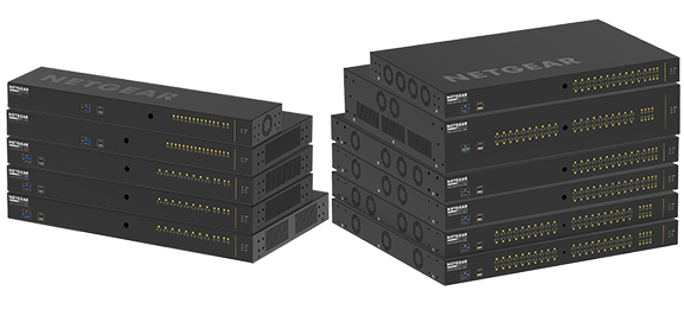
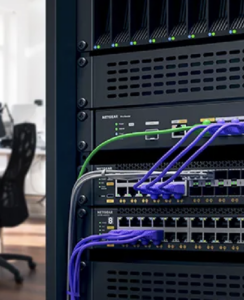 As technology continues to evolve, network switches will continue to play a pivotal role in shaping the future of professional AV, enabling new possibilities and pushing the boundaries of what is possible in terms of performance, reliability, and scalability. One network switch manufacturer leading the charge in the Pro AV industry is Netgear. They provide purpose-built layer 3 switches with preconfigured network protocols like IGMP snooping, multicast routing, and fast leave mechanisms, to optimize multicast traffic delivery and conserve network bandwidth. Netgear also continues to develop switches that include certified profile setup configurations including NDI, SRT, Dante, AES, AVB and many others for audio/video/lighting/control. Adding a simplified custom AV user interface that doesn’t require an IT administrator to configure, and generous PoE power for all AV components in the system is a grand slam for Pro AV integrators.
As technology continues to evolve, network switches will continue to play a pivotal role in shaping the future of professional AV, enabling new possibilities and pushing the boundaries of what is possible in terms of performance, reliability, and scalability. One network switch manufacturer leading the charge in the Pro AV industry is Netgear. They provide purpose-built layer 3 switches with preconfigured network protocols like IGMP snooping, multicast routing, and fast leave mechanisms, to optimize multicast traffic delivery and conserve network bandwidth. Netgear also continues to develop switches that include certified profile setup configurations including NDI, SRT, Dante, AES, AVB and many others for audio/video/lighting/control. Adding a simplified custom AV user interface that doesn’t require an IT administrator to configure, and generous PoE power for all AV components in the system is a grand slam for Pro AV integrators.



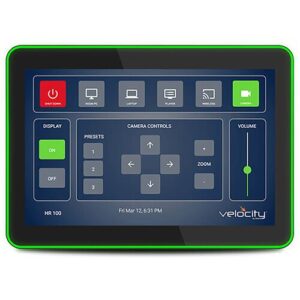
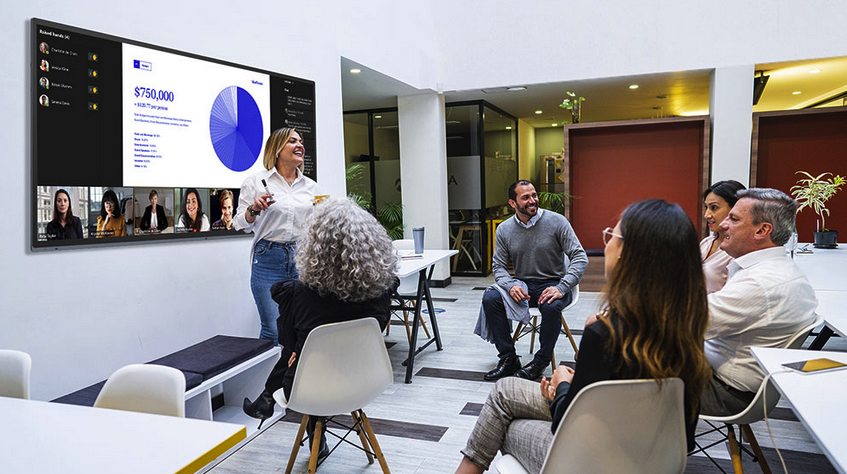
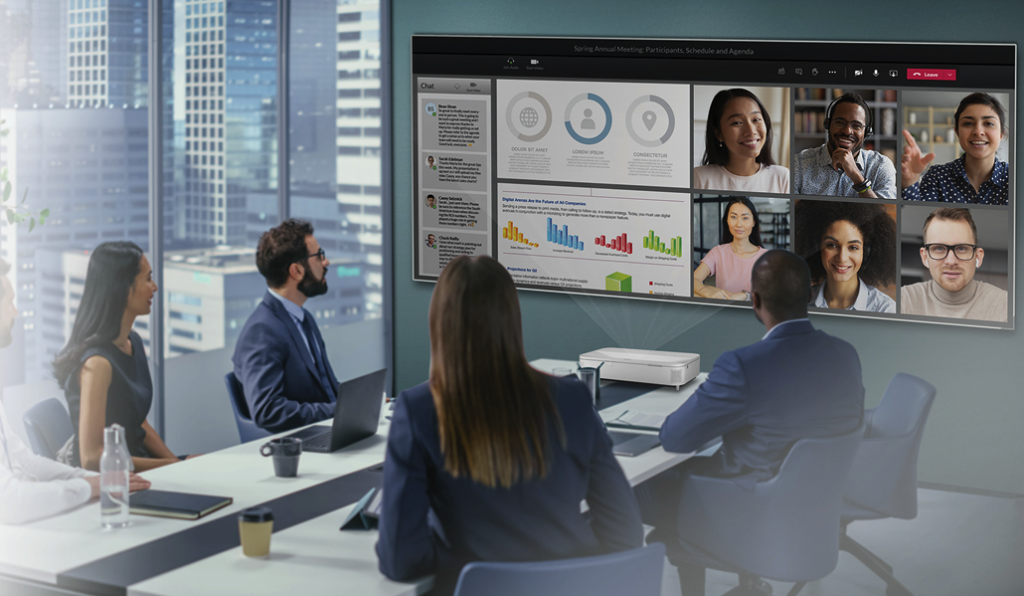
 AI-powered cameras and microphones, such as those offered by
AI-powered cameras and microphones, such as those offered by  Optimizing Collaboration Spaces for Hybrid Work
Optimizing Collaboration Spaces for Hybrid Work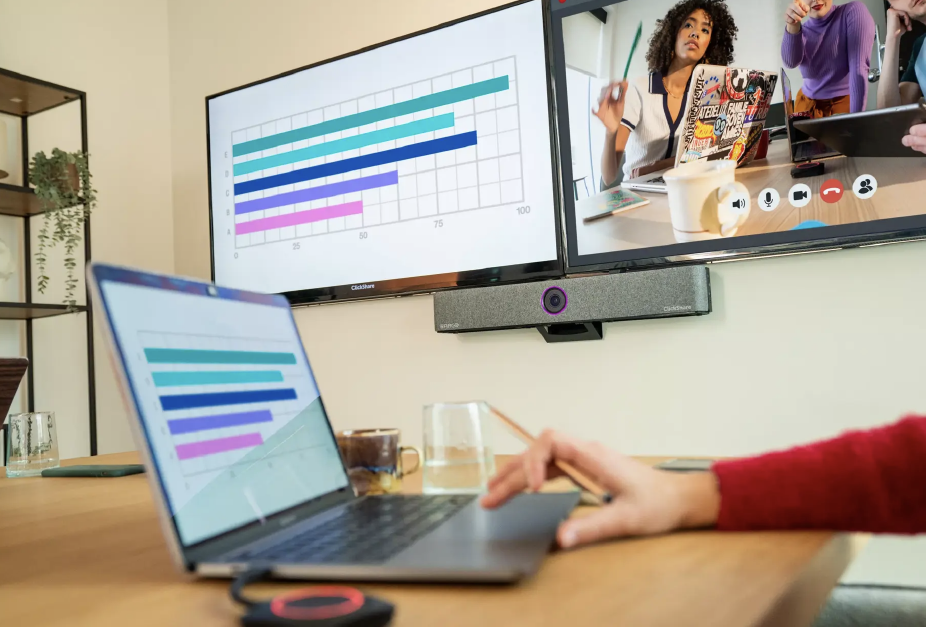 At the forefront of these trends stands the Barco all-in-one ClickShare Bar,
At the forefront of these trends stands the Barco all-in-one ClickShare Bar, 